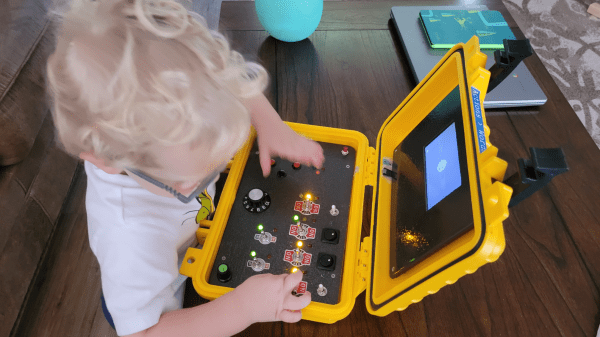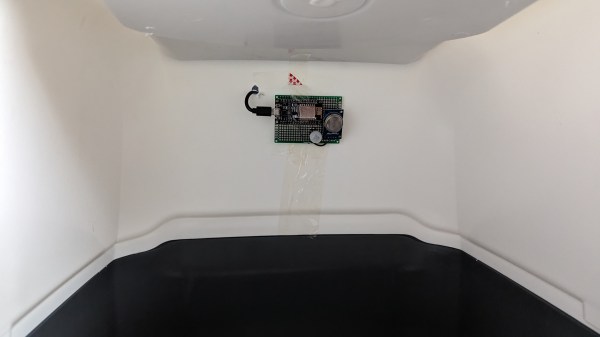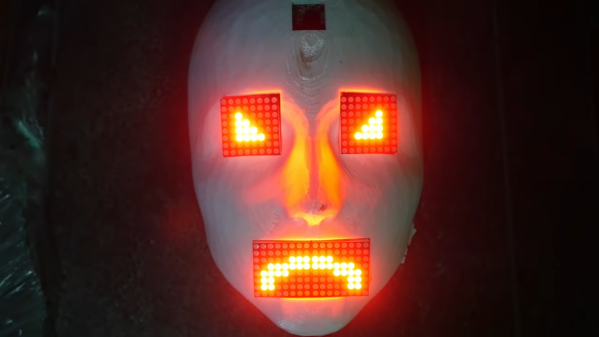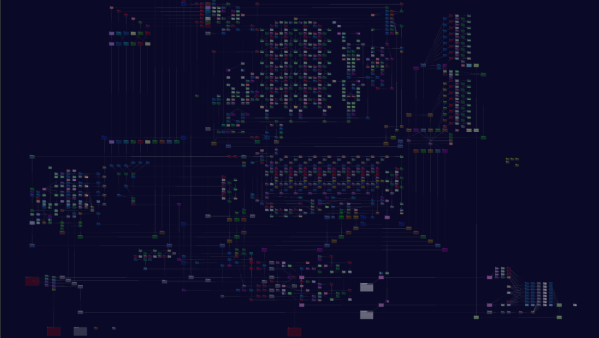[Josh] has a child and what do children like more than stuffing random things into their mouths? Pushing buttons, twiddling knobs, and yanking things of course! So [Josh] did what any self-respecting hacker would do and built his little man a custom cyberdeck.
The build follows the usual route of some electronics wedged into a pelican-style waterproof case — which is a good choice for this particular owner — a repurposed all-in-one LCD video player in the lid and a bunch of switches in the base. The player is apparently a V100-base SBC the likes of which are used in shops for those annoying looping promotional videos, but it doesn’t really matter if all it’s doing is being a focus point.
There is no connection from the base to the ‘display’ but that doesn’t matter here. The base is the fun part, with lots of old-school toggle switches and rotary knobs to play with and a load of LEDs to flash in mysterious ways. The guts of this are controlled via an Arduino Mega 2560, with copious amounts of hot glue on display in true hacker style. On the coding side of things, [Josh] used ChatGPT to produce the code from his prompting and Wokwi to simulate it before deployment to the hardware.








 The robot face is introduced to us with a soundtrack befitting Stranger Things, or maybe Luke Million. The build was inspired by The Doorman, a creepy art piece with animatronic eyes. [Jens’] build started with a 3D model of a 3D mask, with the eyes and mouth modified to have rectangular cutouts for LED displays. The displays are run by a Raspberry Pi Pico, which generates a variety of eye and mouth animations. It uses a camera for face tracking, so the robot’s evil eyes seem to follow the viewer as they move around. In good form, the face has a simple switch—from good to evil, happy to angry. Or, as [Jens] designates the modes: “Fren” and “Not Fren.”
The robot face is introduced to us with a soundtrack befitting Stranger Things, or maybe Luke Million. The build was inspired by The Doorman, a creepy art piece with animatronic eyes. [Jens’] build started with a 3D model of a 3D mask, with the eyes and mouth modified to have rectangular cutouts for LED displays. The displays are run by a Raspberry Pi Pico, which generates a variety of eye and mouth animations. It uses a camera for face tracking, so the robot’s evil eyes seem to follow the viewer as they move around. In good form, the face has a simple switch—from good to evil, happy to angry. Or, as [Jens] designates the modes: “Fren” and “Not Fren.”










